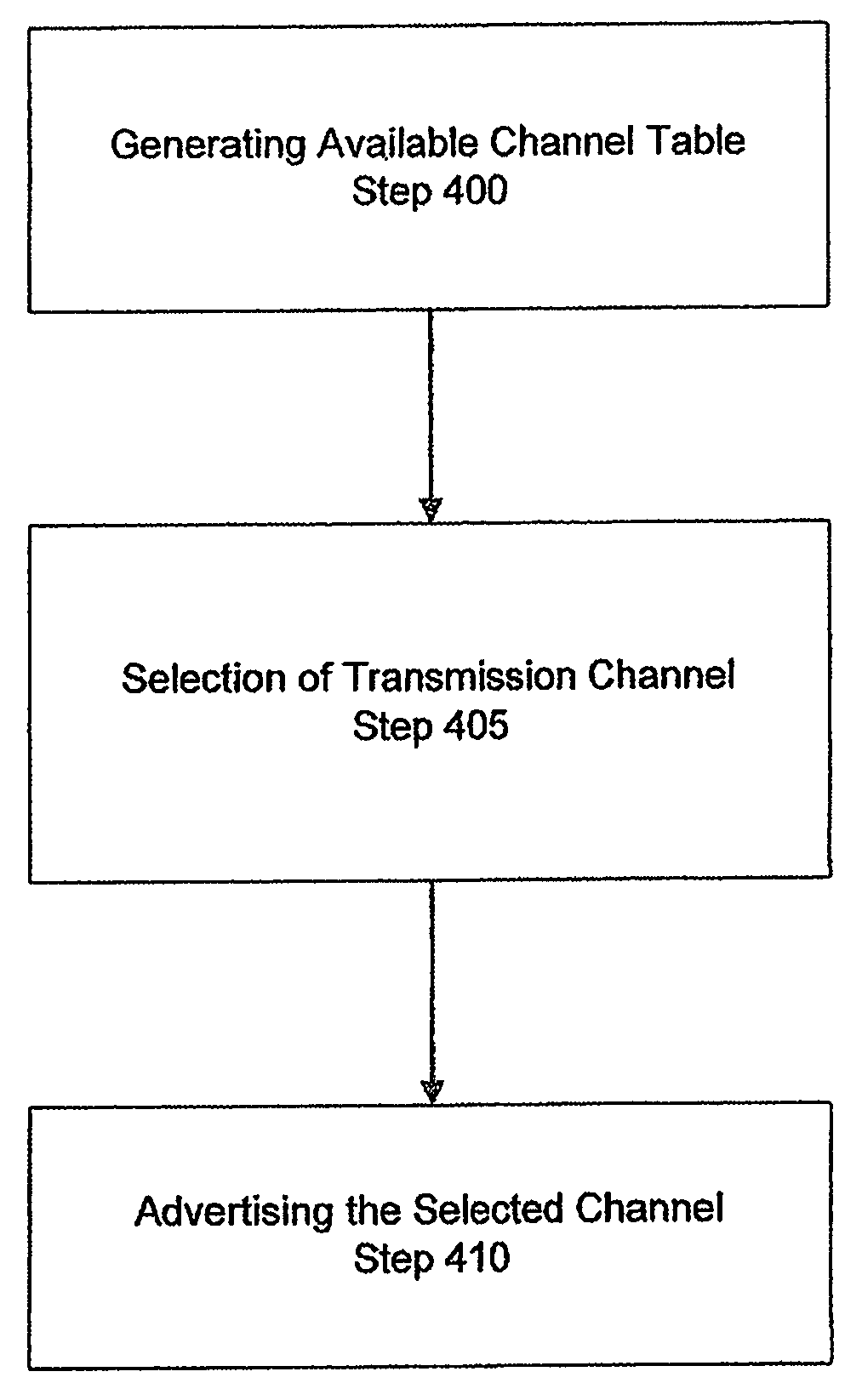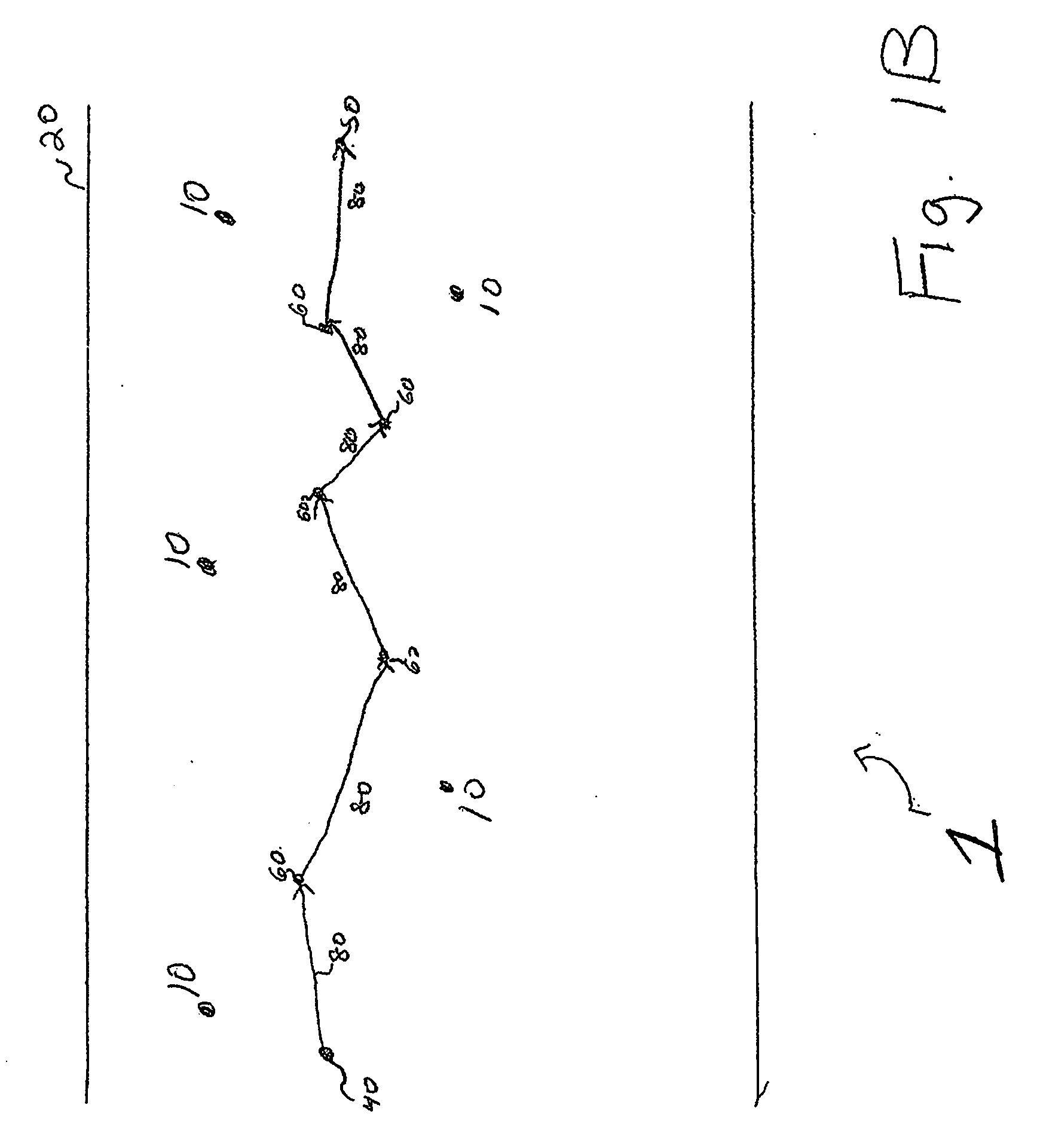Method for determining transmission channels for a LPG based vehicle communication network
a technology of vehicle communication network and transmission channel, applied in the field of communication network, can solve the problems of data collision, interference and significant transmission delay, nodes would interfere with each other's transmission, etc., and achieve the effect of maximizing the likelihood of reaching
- Summary
- Abstract
- Description
- Claims
- Application Information
AI Technical Summary
Benefits of technology
Problems solved by technology
Method used
Image
Examples
Embodiment Construction
Definitions
[0038]A “Node” is a router that implements the channel determination and selection process or method as specified in the following description. For example, a moving vehicle having a communication device is a node. For the purposes of this application, a node and moving vehicle are interchangeably used.
[0039]A “neighbor node” means that there is a direct link between two nodes. A node X is a neighbor node of node Y if node Y can hear node X
[0040]A “hop” is a number of nodes in which a message is relayed. The hop count for a neighboring node is 1.
[0041]In accordance with the invention, nodes or moving vehicles that have been organized into local peer groups (LPG) will exchange information related to channel availability at each node, proactively select channels for transmission from the available channels, and advertise the selected channel. The channels are selected to create a chain between a source (sender) and at least one destination without overlapping or interferenc...
PUM
 Login to View More
Login to View More Abstract
Description
Claims
Application Information
 Login to View More
Login to View More - R&D
- Intellectual Property
- Life Sciences
- Materials
- Tech Scout
- Unparalleled Data Quality
- Higher Quality Content
- 60% Fewer Hallucinations
Browse by: Latest US Patents, China's latest patents, Technical Efficacy Thesaurus, Application Domain, Technology Topic, Popular Technical Reports.
© 2025 PatSnap. All rights reserved.Legal|Privacy policy|Modern Slavery Act Transparency Statement|Sitemap|About US| Contact US: help@patsnap.com



